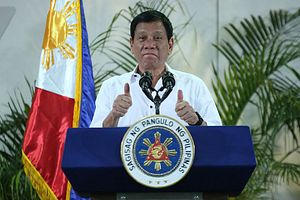Last week, numbers were disclosed for the Philippines’ initial defense budget. While these numbers are still preliminary, they nonetheless warrant analysis to get a sense of what they say and do not say about the Southeast Asian state’s defense outlook for 2020 and beyond under Philippine President Rodrigo Duterte.
As I have noted before in these pages, though the Philippine military has long faced a range of internal and external challenges – including insurgencies, natural disasters, and unresolved territorial and sovereignty issues with neighboring states – it has also suffered from anemic and at at times astrategic investment in past periods. While the country has been trying to make up for this through advancing a phased Armed Forces Modernization Act over the next few decades – with three horizons or phases initially out to 2028 – the defense budget every year tends to be scrutinized for continuity and change with respect to that longer-term trajectory.
Last week, we saw the revelation of Philippine budget numbers sought by the Duterte administration from Congress, which included those for the Department of National Defense (DND). Per the budget announced on August 21, the proposed defense budget for the Philippine military, known as the Armed Forces of the Philippines (AFP) is 188.6 billion pesos ($3.6 billion) for 2020. This initial amount constitutes a slight 3 percent increase compared to the amount for 2019.
The composition of the defense budget and DND budget more generally reflects some structural realities in Philippine defense spending that are evident in some other Southeast Asian countries as well. For instance, while the budget for the AFP constitutes an increase, of the overall budget of 258 billion pesos for the DND – which also administers other institutions, including veteran services – around a quarter of 69.7 billion pesos went to pensions, a 24 percent increase from the previous year despite ongoing efforts by policymakers to control rising costs in this area.
In addition, within the defense budget itself more specifically, despite rising maritime security challenges for the Philippines – Defense Secretary Delfin Lorenzana told Congress when asked about Chinese infringements into Philippine waters that Manila had “very small capability to react to these intrusions” – the bulk of Philippine defense spending is still going to the army. The service distribution proposed has 91.5 billion pesos for the Philippine Army – nearly half of the overall budget – with 29 billion pesos for the Philippine Navy, 25.9 billion pesos for the Philippine Air Force, and 36.8 billion pesos for General Headquarters, most of which is allocated for the AFP’s military modernization efforts.
Each of the services did see minor increases. But for perspective, and in line with the priorities of the Duterte administration, these numbers paled in comparison to, for instance, the Philippine National Police (PNP), which saw around a 30 percent increase in its current budget with the focus on winning the so-called war on drugs. That emphasis reflects more broadly the Duterte administration’s greater emphasis on more internal threats – such as terrorism, criminality, and insurgency – rather than external threats such as China’s maritime assertiveness.
To be sure, these numbers constitute proposed allocations, rather than finalized ones, and as is often the case for defense budgets in the Philippines, the funding will be supplemented by other sources as well. In addition and more generally, for all the focus on topline defense budget numbers, a more granular assessment of Philippine defense spending and military modernization will have to take into account specifics such as how this affects particular line items in the Second Horizon and Third Horizon of the phased Revised Armed Forces of the Philippines Modernization Program. Nonetheless, as these numbers are disclosed, it will continue to be important to assess what they say and don’t say about the Southeast Asian state’s future defense outlook.
































